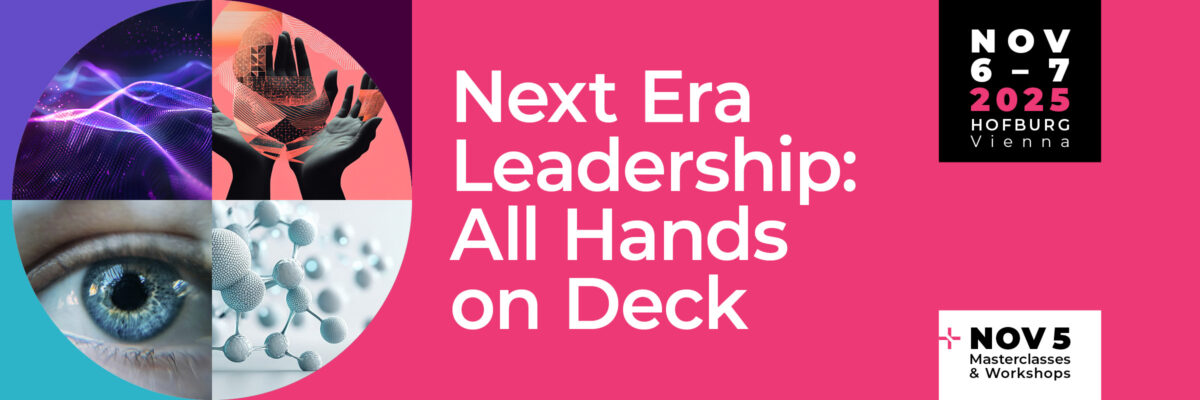
The Renaissance as antiquity reborn
The Renaissance, marking a rebirth of antiquity after a “dark” Middle Ages and before our current modern era, is considered a golden age in culture, economics, and science. The Renaissance shows how flourishing and rebirth of old strengths are possible even after long periods of decline.
Germany, as a country of the economic miracle and as a leading industrial nation, like Europe as a whole, could use a rebirth of former strength. However, this shouldn’t be through simply returning to past success models, but through a new paradigm of success. We see digitalization, especially through AI, as a unique opportunity.
We therefore speak of both a “digital renaissance” in the case of Germany and Europe, and a “company renaissance”, in which these rebirths encompass not only technological dimensions but also economic, cultural, and societal changes.
As Nobel economics laureate Daron Acemoglu makes clear in his works “Why Nations Fail” and especially “Power and Progress”, we stand at a crossroads in terms of our future viability. Our success and the quality of the future do not depend only on technology, and they are not predetermined. Scenarios varying between dystopia and utopia are possible. If we use technology as derived from a digital renaissance scenario, there is an opportunity for a new human orientation and renewed future viability of our often leading companies, new enterprises, and even at the economic and societal level. The key factor is the right digital paradigm.
The organization of the future
The organization of the future is less a well-organized machine with human resources, but rather resembles a living organism: highly adaptable, decentrally organized, and continuously learning. Rigid hierarchies and silos are replaced by flexible network structures that dynamically adapt to market needs. This “Adaptive Organization” is characterized by three core features:
- Intelligent decentralization through company rebuilding. Classical pyramid structures are replaced by networks of autonomous, customer-centric units. These “cells” have or can access all necessary competencies comprehensively within the network, while AI handles coordination and reduces communication complexity.
- Human-AI symbiosis iInstead of automation. AI is primarily used not as an automation tool to substitute human intelligence but as a cognitive partner in hybrid human-machine teams. These co-creative “Augmented Intelligence Teams” combine human creativity and judgment with AI’s analytical power, resulting in a level of problem-solving and innovation beyond the capacity of mere generative AI.
- Leadership instead of management. Leaders of the future are enablers and coaches able to empower teams rather than control them, creating frameworks for self-organization and promoting entrepreneurial thinking at all levels of the organization.
The path to digital renaissance
The transformation to an adaptive enterprise combines technological innovation with cultural change in four interlinked phases:
- Digital foundations
- Building scalable digital and data infrastructure
- Implementing modern collaboration platforms
- Establishing data governance and AI ethics frameworks
- Building data lakes and analytics capabilities
- Initial AI pilot projects in selected areas
- Organizational realignment
- Analyzing and redesigning value chains
- Identifying and forming autonomous business units
- Developing AI-supported coordination mechanisms
- Establishing agile working models and DevOps practices
- Cultural transformation
- Developing new leadership guidelines for the AI age
- Building hybrid competency profiles (Human+AI Skills)
- Establishing a culture of continuous learning
- Promoting innovation and experimentation
- New incentive systems for entrepreneurial action
- Scaling and evolution
- Complete transformation to cellular structures
- Integration of AI into all core processes
- Establishing an ecosystem of internal and external partners
- Continuous evolution of the organization
- Building new business models.
In this enterprise, critical success factors include: clear vision and leadership commitment; a balance between transformation and stability (cf Peter Drucker’s “continuity and change”); a focus on employee development and empowerment; an iterative approach with rapid learning experiences; and open communication combined with active change management
The time is now
The technological possibilities for this renaissance exist today. AI systems have reached a maturity level that makes the vision of the adaptive enterprise a reality. The crucial question is no longer whether, but how quickly companies will tackle this transformation.
Digital renaissance offers companies a historic opportunity to reinvent themselves in a form that is more human, intelligent, and successful than ever before. But like the original Renaissance, this transformation requires courage, vision, and the will to shape the future.
As Drucker famously put it: “The best way to predict the future is to create it.”
This article was created in a co-creative process between Lucke Co-CEO Sven Henke, Dr. Winfried Felser, and in dialogue with various generative AIs.
About the authors:
Marc Wagner is a proven expert on digital transformation, employee experience & new work and was voted Top HR Influencer (Personalmagazin) and among the Top 25 New Workers (Workpath) in 2018 / 2020 / 2022 / 2024. As Senior Vice President People & Organization, he has helped to position Atruvia AG as one of the most attractive IT employers in Germany and also to establish a holistic employee experience approach. In the future, he will scale this know-how as Senior Executive Advisor in the cooperative network and, as Co-CEO, position Lucke GmbH as a digitalization and technology consultancy to bring the #CompanyRenaissance to life.
Sven Henke serves as a digital transformation leader at Lucke EDV, where he combines strategic vision with human-centric innovation. His leadership approach is shaped by his analytical mindset and commitment to lifelong learning, driving technological advancement that empowers people and organizations. With a focus on trust and sustainable progress, he leads initiatives that bridge technology with human potential, fostering environments where digital transformation catalyzes both business excellence and individual growth.
Dr Winfried Felser is an entrepreneur, future designer and author. As a management consultant and co-founder and deputy head of a Fraunhofer application centre, he has worked on transformation through the network economy and digitalisation. Today, he is the initiator and managing director of NetSkill Solutions GmbH.

